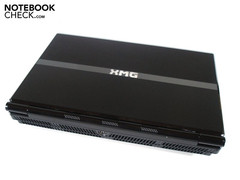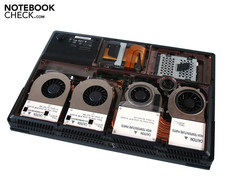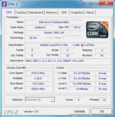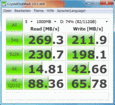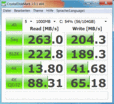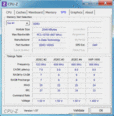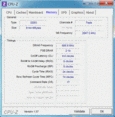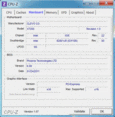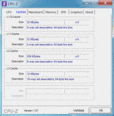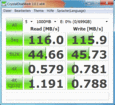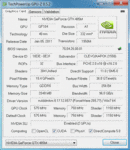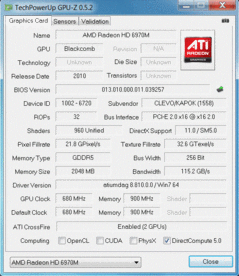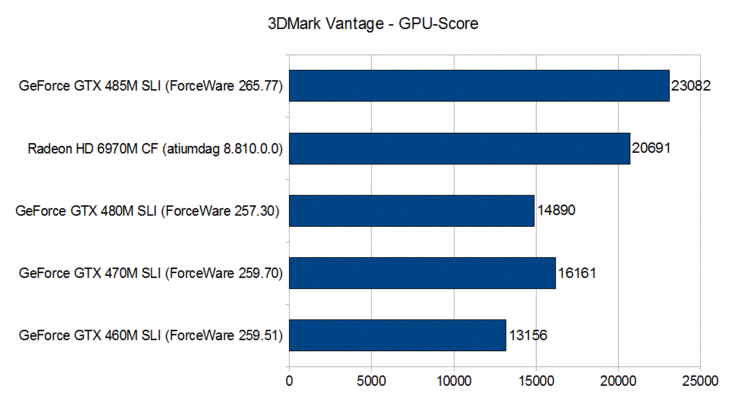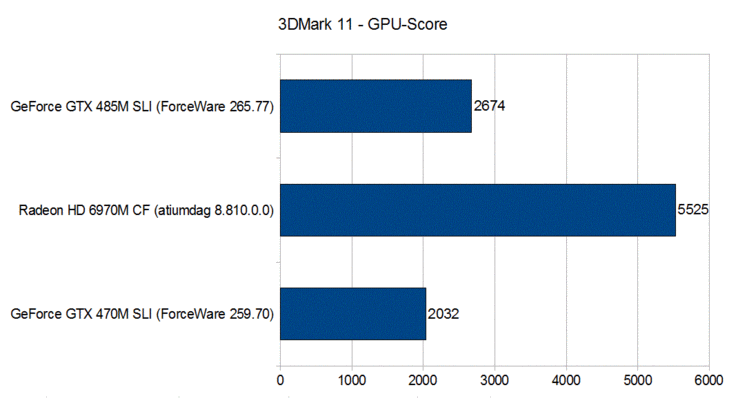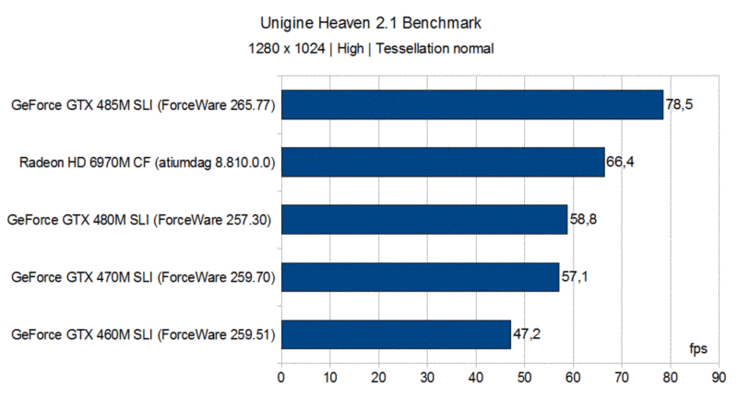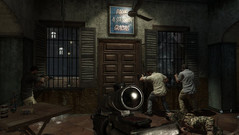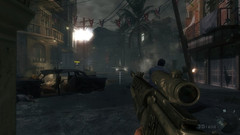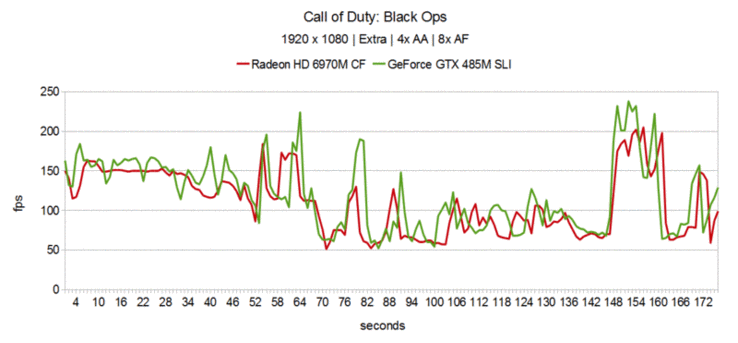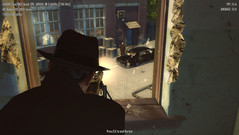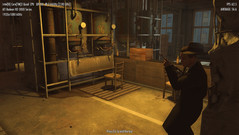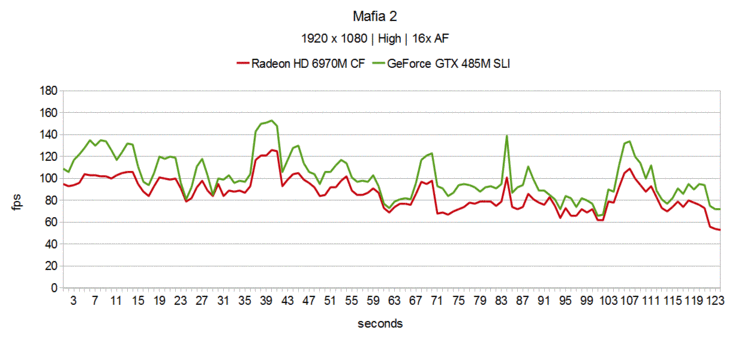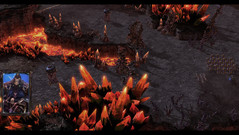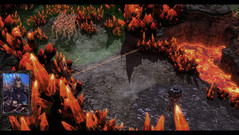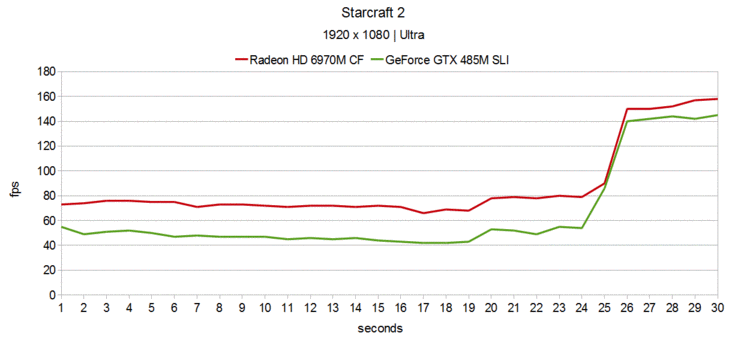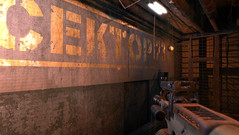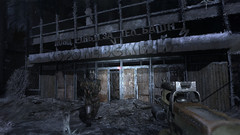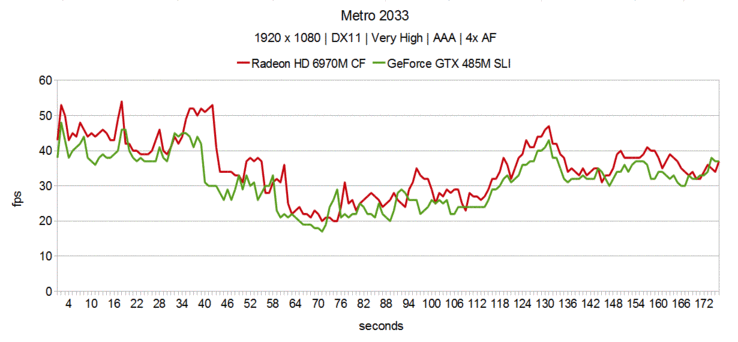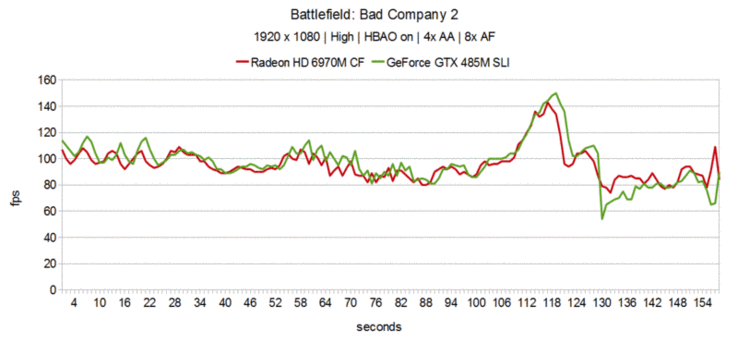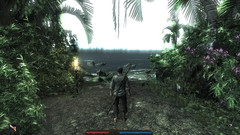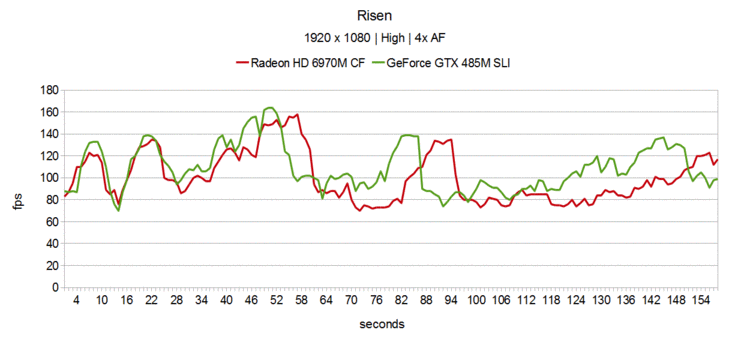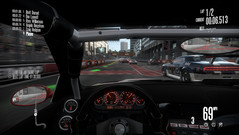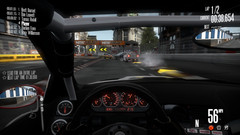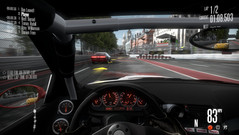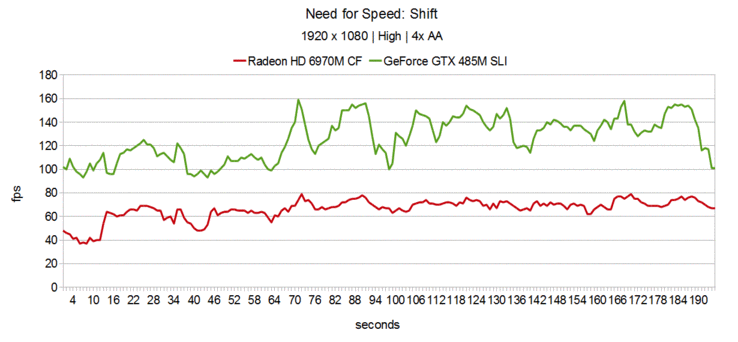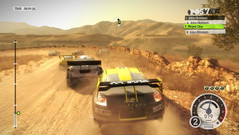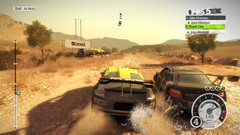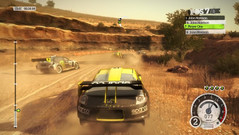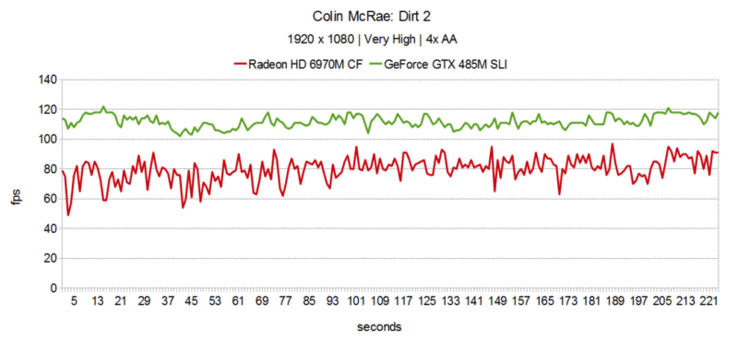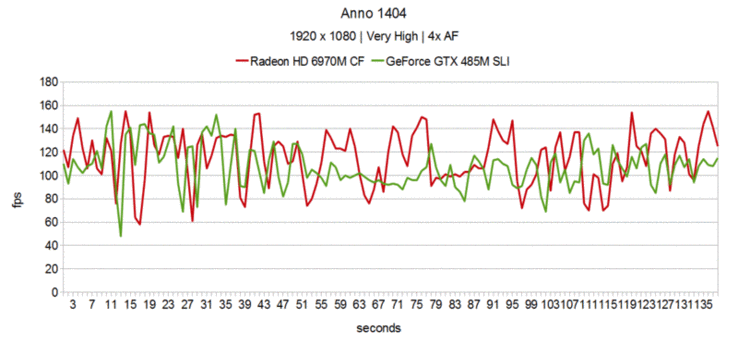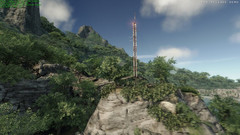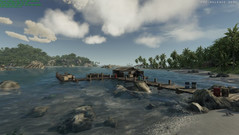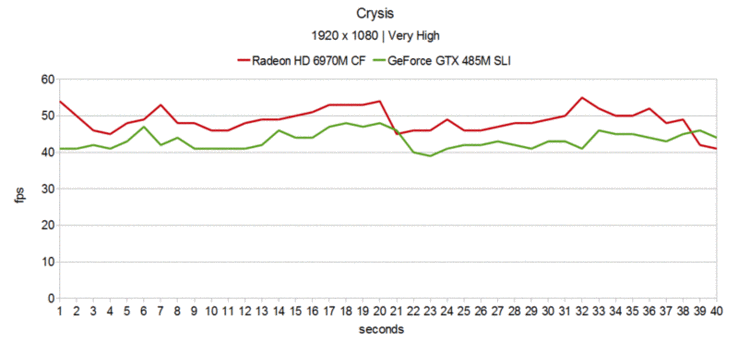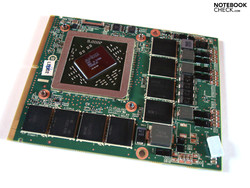Review GeForce GTX 485M SLI vs. Radeon HD 6970M CF
Mobile graphics cards have trailed a long way behind their desktop counterparts for many years when it comes to raw power. Even the strongest notebook models are mediocre when compared to actual desktop GPUs. Anyone looking for top gaming performance without a huge tower next to their desk, will find that their search for a suitable system quickly leads towards pricey desktop replacement notebooks, which are fitted with two graphics cards at the same time. We have got a hold of the two strongest and most expensive dual-GPU combos around at the moment, Nvidia’s GeForce GTX 485M SLI (short for Scalable Link Interface) and AMD’s Radeon HD 6970M CF (short for CrossFire), to put them both to the test.
Test system - Schenker XMG U700 ULTRA
This comparison was made possible by the German notebook supplier Schenker, who kindly made the 17.3-inch XMG U700 ULTRA available to us. This gaming leviathan, measuring 419 x 286 x 73 mm and weighing 6 kg, is based on the Clevo X7200 barebones which we have reviewed several times with other graphics combinations (see links below). Our test model was extremely generously equipped and would have set us back a hefty €4,424 (GTX 485M SLI) at the time of writing.
The test model contained Intel’s high-end X58 chipset, which included 6 GB of RAM (3x 2048 MB DDR3 RAM) and an extremely powerful desktop processor with a whole six cores, namely the Core i7-990X (3.47 - 3.73 GHz). Alongside that were two lightning-fast SSD drives, also made by Intel, with the model number X25-M (SSDSC2MH120A2K5). And there’s more: a fast (7,200 rpm) Seagate HDD (ST9750420AS) with a large 750 GB capacity was also part of the set-up. The operating system used was Windows 7 Home Premium 64 Bit. Power was supplied to the machine via a pair of bulky 300 Watt mains adaptors (a special ad hoc solution put together by Schenker); the series production models should be accompanied by a 600 Watt power block. The XMG U700 ULTRA is available from €1,769 on Schenker’s own website mysn.de, where it can be configured in detail to suit your individual needs.
Test configuration
- Windows 7 Home Premium 64 Bit
- Intel X58 chipset
- Intel Core i7-990X desktop CPU (6 cores)
- Nvidia GeForce GTX 485M SLI
- AMD Radeon HD 6970M CrossFire
- 17.3“ Full-HD LED display (glossy)
- 6 GB DDR3 RAM (1333 MHz)
- 2x Intel X25-M SSDSC2MH120A2K5 SSDs (each 120 GB)
- Seagate Momentus ST9750420AS HDD (750 GB, 7200 rpm)
- Starting price: €1,769 (price dependent on hardware configuration)
Links:
- Review: Nvidia GeForce GTX 485M
- Review: AMD Radeon HD 6970M
- Review: Schenker XMG U700 ULTRA (GeForce GTX 460M SLI)
- Review: Schenker XMG U700 ULTRA (GeForce GTX 470M SLI)
- Review: DevilTech HellMachine DTX (GeForce GTX 480M SLI)
The technology - GeForce GTX 485M SLI
The GeForce GTX 485M SLI is a combination of two GTX 485M GPUs - as you would expect - that are connected to each other via the so-called SLI bridge. The GeForce GTX 485M is part of Nvidia’s powerful Fermi generation (chip GF 104), and is currently the fastest mobile high-end graphics card, largely thanks to its 2048 MB of GDDR5 video memory, which is ideally matched with a 256 Bit interface. Another decisive feature is the number of shader units; its 384 unified shaders promise first-rate performance. The clock speeds are unchanged - Schenker sticks with the usual 575 MHz (core), 750 MHz (memory) and 1150 MHz (shaders).
The GeForce GTX 485M has no shortage of additional features; as well as DirectX 11 which is important for gamers, the Nvidia GPU supports a number of other technologies like PhysX and 3DVision, which we will not examine in detail here (see our separate review for that). However, this 40 nm graphics card is far from being frugal with its energy, with a single GeForce GTX 485M drawing up to 100 Watts of power. We had to use ForceWare 265.77 as a driver (newer versions didn’t work yet), which was included with the laptop on a DVD. It has been around for several months now, but does offer dual-GPU support for all the games we tested (with the exception of Crysis 2).
The technology - Radeon HD 6970M CF
AMD’s alternative to Nvidia’s SLI is called CrossFire. Two Radeon HD 6970M GPUs represent the very best of AMD’s current portfolio. The DirectX 11 capable Radeon HD 6970M, produced using the modern 40 nm process, has the slick-sounding codename ‘Blackcomb XT’ and is equipped with 960 unified shaders (not directly comparable with Nvidia’s). The clock speeds are not to be sneezed at; at 680 MHz (core) and 900 MHz (memory) they are relatively high. Like the GeForce GTX 485M, the Radeon HD 6970M also has a generous 2048 MB of video memory (GDDR5), again with a 256 Bit interface.
When it comes to features, the Radeon HD 6970M may not quite measure up to its Nvidia rival, but the advantage of the AMD graphics card is its significantly lower price. In our review of the Eurocom Racer notebook, a single Radeon HD 6970M finished only slightly behind the single GeForce GTX 485M in terms of performance (a difference of around 7%). Its energy consumption is also a little lower than the GeForce GTX 485M, with the Eurocom giving a reading of 75 - 100 Watts for example. The AMD driver (8.810.0.0) was also somewhat newer that its Nvidia counterpart.
Disadvantages of dual-GPU systems
Looking beyond the pure increase in power, dual-GPU systems do unfortunately have some problems to contend with. As well as obvious disadvantages like the substantial energy consumption and the massive cooling effort required (which means you have to have a large case and generally loud fans too), we should mention the so-called micro-stuttering effect. This phenomenon is particularly apparent at lower refresh rates (below 30 fps). Because the images are rendered by one graphics card then the other in an alternating fashion, the interval between the individual frames can vary, which is perceived by the brain as stuttering. The same frame rate on a single graphics card would appear noticeably more fluid.
Happily the GeForce GTX 485M SLI and Radeon HD 6970M are so powerful that the frame rates very rarely fall into the two-digit region, and so for them micro-stuttering is not actually an issue. On the other hand, dual-GPU systems are heavily dependent on drivers, which is definitely a problem. If you don’t constantly keep your drivers up to date, you run the risk that newer games won’t benefit as much as they should do (or not at all in the worst cases) from the second graphics card. In the past, Nvidia has seemed to us to have the better driver support. You can see later in the review whether this impression was confirmed by our experience here.
Benchmarks
Let’s look at the synthetic graphics benchmarks. We have just two additional points to make before we get started. Firstly, since the GPU combinations mentioned below were all tested in the Clevo X7200 Barebones with a desktop CPU, we have not made continual reference throughout to the system used. And secondly, because of different driver versions, the results given here do not necessarily represent the most recent state of affairs - in particular the GeForce GTX 460M SLI, GTX 470M SLI and GTX 480M SLI could perform better now with updated drivers.
3DMark Vantage
The GPU score of the 3DMark Vantage test is a good starting point for a comparison of graphics cards. Both the GeForce GTX 485M SLI and the Radeon HD 6970M CF did an excellent job of coping with the standard resolution setting (1280 x 1024). The SLI system has its nose in front by 12% with 23,082 points to 20,691. The rest of the dual-GPU systems follow at a respectful distance, with the GeForce GTX 470M SLI having to settle for 16,161, for example.
3DMark 11
In the most recent 3DMark 11 benchmark the Radeon HD 6970M CF climbed confidently to the top spot on the podium. As the GeForce GTX 485M SLI’s driver was apparently lacking an appropriate profile, the AMD system was almost twice as fast (5,525 points to 2,674). Luckily the 3DMark 11 is not the only DirectX 11 based benchmark; the Unigine Heaven 2.1 benchmark was able to compare the two dual-GPU systems without a problem.
Unigine Heaven 2.1
Because they have fewer tessellation units, it is difficult at the moment for AMD graphics cards to win out against Nvidia’s Fermi architecture in the Unigine Heaven 2.1 benchmark. As such it was not surprising to find that the Radeon HD 6970M CF came in behind the GeForce GTX 485M SLI. With high detail settings, normal tessellation and a resolution of 1280 x 1024, the GTX 485M SLI pulled ahead by a whole 18% (78.5 to 66.4 fps).
Gaming benchmarks
The practical gaming benchmarks now follow. So as not to overstep the bounds of this review, we have limited our results to the Full HD resolution of 1920 x 1080. The other results are available from the GPU’s individual pages or our list of games. For each game we give a short introduction and then evaluate the performance. At the end of every game we have also included a graph which illustrates the change in refresh rates over time. Other than for Bad Company 2, all screenshots are taken from our benchmark sequences.
Call of Duty: Black Ops
With this enormously successful Black Ops game, developer Treyarch has for the first time been able to approach the quality of the spin-offs made by Call of Duty creators Infinity Ward. Visually, the first-person shooter can no longer be called cutting-edge; the Modern Warfare engine has seen better days and looks outdated in many places, despite numerous improvements. However, the advantage is that the hardware requirements are moderate and so even mid-range notebooks cope well with Black Ops. Dual-GPU systems, then, have no trouble with it whatsoever on the maximum quality settings.
We used the Cuban street fight from the first single-player mission as a benchmarking sequence, with the ‘extra’ detail level, four times anti-aliasing (AA), eight times anisotropic filtering (AF) and a 1920 x 1080 resolution. The GeForce GTX 485M SLI was a little more comfortable in Black Ops; the Radeon HD 6970M CF trailed by 8% with 110.5 fps to the GeForce’s 119.0.
Mafia 2
Mafia creators 2K Czech (formerly Illusion Softworks) worked for a whole eight years on this sequel to one of the best action games of all time. The result was a very good third-person shooter, but one which could not approach the superb original in its plot or its missions. One positive feature is the presence of an integrated benchmark. We chose the 1920 x 1080 resolution, high detail and 16x texture filtering settings.
Starcraft 2
Will legendary developers Blizzard ever release a game that isn’t a million-selling hit? We have our doubts; at any rate their highly acclaimed real-time strategy Starcraft 2 became a massive bestseller. When the screen is overrun with units in multiplayer mode or in later missions of the single-player campaigns, mid-range systems start to stutter. But not the high-end graphics cards; the introduction to the ‘For the Swarm’ challenge (1920 x 1080, ultra) was beautifully smooth on the dual-GPU systems.
The CrossFire did significantly better than the SLI here, in contrast to the previous game. The Radeon HD 6970M CF was able to overtake the GeForce GTX 485M SLI by a substantial 34% (88.6 fps to 65.9 fps). The GeForce GTX 470M SLI (50.3 fps) and GeForce GTX 460M SLI (40.8 fps) also look old compared to the Radeon HD 6970M CF.
Metro 2033
This PC game is based on Dmitry Glukhovsky’s thrilling novel of the same name. Reminiscent of S.T.A.L.K.E.R. in its atmosphere and style, the first-person shooter is a serious challenge even for modern hardware. Previously there was no mobile graphics card fast enough to handle the game with very high details, DirectX 11 mode and a resolution of 1920 x 1080. Even the dual-GPU notebooks we’ve tested up till now have found the benchmarking sequence (start of the single player story) a very touch nut to crack.
With the GeForce GTX 485M SLI and Radeon HD 6970M CF there is still some stuttering in places, but the average frame rates of 31.4 fps and 35.3 fps respectively are deserving of respect. The AMD system has an advantage of 12% in this game. The GeForce GTX 470M SLI and GeForce GTX 460M SLI turn out to be substantially slower; 23.0 fps and 18.5 fps are nowhere near playable.
Battlefield: Bad Company 2
To stay on top during multiplayer battles, you need skill and plenty of practice but also a good refresh rate. On the maximum graphics settings, this latest Battlefield spin-off is quick to put many systems in their place. Having two graphics cards is a real boost to performance, as we saw from the opening sequence of the single player mission (boat journey up to the shore) with high details, 4x anti-aliasing and 8x texture filtering.
Bad Company 2 turned out to be a real neck-and-neck race for AMD and Nvidia. While the refresh rate for the Radeon HD 6970M CF settled at a fabulous 95.5 fps, the GeForce GTX 485M SLI achieved a marginally higher 96.8 fps. Below them came a large gap, then the comprehensively beaten GeForce GTX 470M SLI (69.2 fps) and GeForce GTX 460M SLI (56.7 fps).
Risen
Anyone who likes role-playing games with open and freely accessible worlds should enjoy Risen. This German third-person game may seem rather antiquated in many ways, but with the great atmosphere, the authentic appearance of the landscapes and the excellent character development you will quickly overlook its failings. For our benchmark we used the free demo version, roaming around the shore for several minutes directly after the start of the game.
A resolution of 1920 x 1080, with high details and 16x anisotropic filtering, was handled effortlessly by all the dual-GPU systems. Even the GeForce GTX 460M SLI (63.5 fps) and GeForce GTX 470M SLI (81.8 fps) were both perfectly suitable for monster slicing and dicing. AMD’s Radeon HD 6970M CF, once again, went some way better with 101.2 fps. The top position in Risen was taken by the GeForce GTX 485M SLI; at 109.1 fps it gave us our new value to beat.
Need for Speed: Shift
With this game, publishers EA edged the long-running Need for Speed series more in the direction of realism. This may have enhanced the quality of the series, but the familiar Need for Speed feel was almost entirely lost as a result. Talking of losing: Shift has always favoured Nvidia - comparable AMD graphics cards tend to do noticeably worse on it. We completed a simple circuit through the urban canyons of London (demo version). We used high details, 4x anti-aliasing and a resolution of 1920 x 1080 to really make the graphics cards sweat.
Colin McRae: Dirt 2
The graphics on this rally simulator still look very good; it was one of the first games on the market with support for DirectX 11. Standout features are the realistic water effects and the excellent lighting. We relied on the demo’s integrated benchmark, which we ran with very high details, 4x AA and a 1920 x 1080 resolution.
The Nvidia graphics cards had the advantage in this game, much like they did in Need for Speed: Shift. While the GeForce GTX 485M SLI sat comfortably in first place with 114.3 fps, the Radeon HD 6970M CF (80.3 fps) was sandwiched between the GeForce GTX 460M SLI (75.4 fps) and GeForce GTX 470M SLI (93.0 fps).
Anno 1404
The classic city-building game Anno 1404 powerfully demonstrates to all its competitors just what is technologically possible these days in the strategy genre. Its idyllic medieval world is a wonder to behold, so much so that it is sometimes hard to concentrate on the actual events of the game. As you can see from the performance graph below, the frame rates tended to fluctuate strongly. This can be explained by the fact that the load on the system varies according to the level of zoom being used.
Our benchmark was based on the campaign mission in the free demo, consisting of a few minutes of gameplay. Even a 1920 x 1080 resolution, very high details and 4x anisotropic filtering do not cause any problems at all for modern high-end graphics cards. The Fraps tool gives a frame rate of 107.4 fps for the GeForce GTX 485M SLI, while the AMD Radeon HD 6970M CF was able to render our settings even more smoothly at 116.7 fps (+9%).
Crysis
We would have preferred to bring you the results of a Crysis 2 benchmark. However, we were soon forced to abandon this plan, as the Radeon HD 6970M CF produced massive graphics errors in this latest first-person shooter by Crytek, while the second GeForce GTX 485M SLI failed to give any improvement in performance. So although it is more than three years old, we had to turn to the game’s predecessor for results.
Very high details and a resolution of 1920 x 1080 on Crysis is an insurmountable challenge for most graphics cards (integrated benchmark). Neither the GeForce GTX 460M SLI (25.4 fps) nor the GeForce GTX 470M SLI (31.7 fps) were able to guarantee a wholly stutter-free experience. But with the GeForce GTX 485M SLI you can enjoy Crysis in its full glory (43.3 fps); and the first-person shooter ran most smoothly with the Radeon HD 6970M CF, which finished top with 49.0 fps.
Verdict
Without a doubt, the performance of these dual-GPUs, the most powerful mobile systems on the market, is excellent by notebook standards. Any game that is currently available will run smoothly, even with maximum graphics settings and various visual enhancements (AA and AF). High resolutions in the region of 1920 x 1080 are also no object.
Despite its markedly lower price, the Radeon HD 6970M CF comes amazingly close to its Nvidia counterpart; the GeForce GTX 485M SLI is only around 6% faster across all the benchmarks (1920 x 1080, ultra settings). So in terms of price-to-performance ratio, the Radeon HD 6970M CF is clearly the better choice, but the GeForce GTX 460M SLI offers somewhat more consistent performance, a lower error rate, more mature drivers and superior image quality. It also has more additional features.
The two GeForce GTX 470M GPUs had a more difficult time of it. While the GeForce GTX 485M SLI was out in front by 33% overall, the Radeon HD 6970M CF, which comes at a similar price, also beat it by some margin. As for the GeForce GTX 460M SLI, we can no longer recommend it, as a single GeForce GTX 485M can match it for performance (GTX 485M SLI +62%).
However, because of the numerous issues and disadvantages associated with dual-GPU systems, you should consider very carefully before you buy. As well as the pretty exorbitant energy consumption, there is the high temperature and noise production to bear in mind, as well as the issue of micro-stuttering. Dual-GPU notebooks are also bulky and heavy; they are desktop replacements, not really suitable for mobile use at all.
The price is also a major factor - an equally powerful desktop PC with comparable hardware (e.g. a GeForce GTX 570) can be got for only a fraction of the cost (about three times less), including a monitor. Therefore our advice has to be: either stick with a notebook with a single GeForce GTX 485M or Radeon HD 6970M, or go straight for an actual desktop PC.






